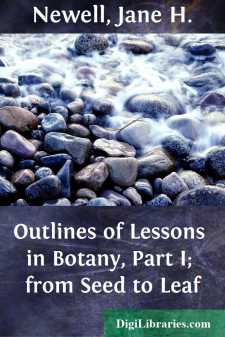Categories
- Antiques & Collectibles 13
- Architecture 36
- Art 48
- Bibles 22
- Biography & Autobiography 813
- Body, Mind & Spirit 142
- Business & Economics 28
- Children's Books 17
- Children's Fiction 14
- Computers 4
- Cooking 94
- Crafts & Hobbies 4
- Drama 346
- Education 46
- Family & Relationships 57
- Fiction 11829
- Games 19
- Gardening 17
- Health & Fitness 34
- History 1377
- House & Home 1
- Humor 147
- Juvenile Fiction 1873
- Juvenile Nonfiction 202
- Language Arts & Disciplines 88
- Law 16
- Literary Collections 686
- Literary Criticism 179
- Mathematics 13
- Medical 41
- Music 40
- Nature 179
- Non-Classifiable 1768
- Performing Arts 7
- Periodicals 1453
- Philosophy 64
- Photography 2
- Poetry 896
- Political Science 203
- Psychology 42
- Reference 154
- Religion 513
- Science 126
- Self-Help 84
- Social Science 81
- Sports & Recreation 34
- Study Aids 3
- Technology & Engineering 59
- Transportation 23
- Travel 463
- True Crime 29
Outlines of Lessons in Botany, Part I; from Seed to Leaf
by: Jane H. Newell
Categories:
Description:
Excerpt
I.
[Footnote 1: This section may be omitted, and the lessons begun with Seedlings, if the teacher prefer.]
What is Botany? The pupils are very apt to say at first that it is learning about flowers. The teacher can draw their attention to the fact that flowers are only a part of the plant, and that Botany is also the study of the leaves, the stem, and the root. Botany is the science of plants. Ask them what the Geranium is. Tell them to name some other plants. The teacher should keep a few growing plants in the schoolroom for purposes of illustration.
Ask them what else there is in the world besides plants. By this question the three kingdoms, animal, vegetable, and mineral, are brought up. It will give occasion for a discussion of the earth and what it contains, the mountains, formed of rocks and soil, the plants growing on the earth, and the animals that inhabit it, including man. Let them name the three kingdoms with some example of each. Which of these kingdoms contain living things? The words organic and inorganic can be brought in here. An organ (Εργον, meaning work) is any part that does a special work, as the leaves, the stem of a plant, and the eye, the ear of animals. An organism is a living being made up of such organs. The inorganic world contains the mineral kingdom; the organic world includes the vegetable and animal kingdoms.
One's aim in these lessons should always be to tell the pupils as little as possible. Try to lead them to think out these things for themselves.
Ask them how plants differ from animals. They will say that plants are fixed to one place, while animals can move about; that plants have no will or consciousness, and that animals have. These answers are true when we compare the higher animals with plants, but the differences become lost as we descend in the scale and approach the border land where botanist and zoologist meet on a common ground. Sea-anemones are fixed to the rock on which they grow, while some of the lower plants are able to move from place to place, and it is hardly safe to affirm that a jelly-fish is more conscious of its actions than is a Sensitive Plant, the leaves of which close when the stem is touched.
There is no real division between animals and plants. We try to classify the objects about us into groups, according to the closeness of their relationships, but we must always remember that these hard lines are ours, not Nature's. We attempt, for purposes of our own convenience, to divide a whole, which is so bound together that it cannot be separated into parts that we can confidently place on different sides of a dividing line.
1. Plants as Food-Producers.—The chief distinguishing characteristic of plants is one that the pupils may be led to think out for themselves by asking them what animals feed upon. To help them with this, ask them what they had for breakfast. Oatmeal is mentioned, perhaps. This is made from oats, which is a plant. Coffee and tea, bread made from wheat, potatoes, etc., all come from plants.[1] Beef, butter and milk come from the cow, but the cow lives upon grass....


